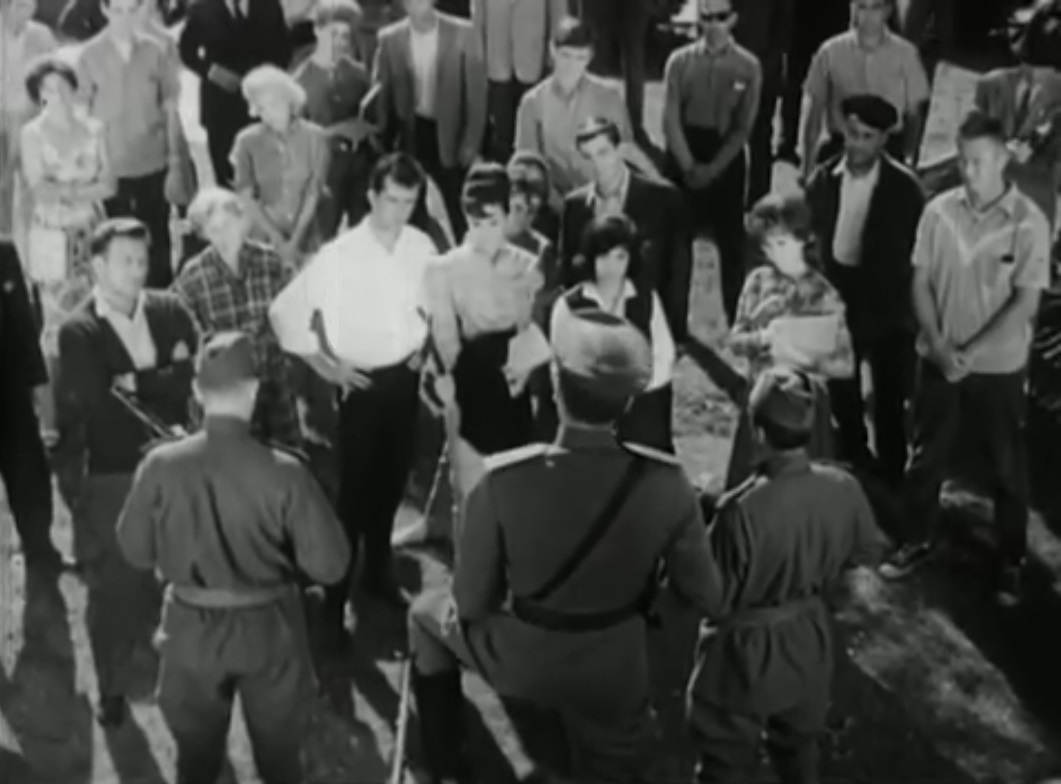Horror
Island
An impecunious
Princeton graduate stumbles on yet another moneymaking scheme with a pirate map
and Sir Henry Morgan’s island.
The mad academic
conclusion has an anticlimax and a shaggy dog that trumps all.
Foran, Carrillo et
al. in an up-and-up haunted house gagfest dozed through by a very jaded
yachtsman.
T.S. of the New
York Times blinked and yawned, Halliwell couldn’t make head nor tail
of it either.
The Wolf Man
He is a wolf to
women, pure and simple. Waggner’s masterpiece is centrally focused on the
sequence that begins in the observatory of Talbot House. Larry has been many
years in America, was a technician at Mt. Wilson, knows nothing of astronomy,
he trains Sir John Talbot’s refractor on the English village street, in and
out of focus, remarkably exact, a girl in the window above Charles Cunliffe,
Antiques. Presently he is there, standing outside the door next to Saneman
Products, Ltd. He admires her earrings, upstairs on her dressing table,
won’t buy any others, he’s “psychic”. He’ll buy a
cane, Waggner as producer handles this without any fuss, she lifts one before
the customer, holding it in her hand, then another, he likes neither, takes a
silver wolf’s-head out of the rack, swings it like a putter.
The gypsy
fortuneteller sees the pentagram in his victim’s hand, Larry beats the
wolf to death, a man is found. No scar is visible where Larry is bitten, later
a pentagram is there.
His own father
beats him to death with the cane, not recognizing the poor beast, who lives in
the yellow eyes that sire Rosemary’s baby, and in the essential remake, The
Boston Strangler (dir. Richard
Fleischer).
The beast lies
dead, the chief constable considers it a heroic death, slain by a wolf, the
girl is in the gamekeeper’s arms, she turns to the body, now recognizable,
calls out his name, “Larry!”
And so you have,
on top of everything else that necessarily follows, Bu˝uel’s El.
Operation Pacific
The submarine
warfare 1941-45.
Max
Steiner’s theme and handling of the first scene prefigure John Barry (and
the scene goes into Ralph Nelson’s Father
Goose).
U.S.S. Thunderfish,
unreliably armed. The metaphor is divorce (the U.S.
Navy is co-respondent), the decoy ship is from Archie Mayo’s Crash Dive.
The proposition
needs studying on, torpedo tests, “theory”.
The pivotal exchange,
which takes place between two nurses at the U.S. Naval Hospital built in 1942
for Pearl Harbor, suggests that Waggner’s uniformed protagonists inspired
Stanley Kramer’s nun and priest in The
Runner Stumbles.
The beautiful
theme returns after the sinking of the “I-type Jap submarine”.
Red Nightmare

“Espionage
as a science, propaganda as an art, sabotage as a business.” Cf. Alfred E. Green’s Invasion USA.
Waggner’s
singular masterpiece has precedents in LeRoy’s You, John Jones! and
Renoir’s Salute to France, the phony
American town behind the Iron Curtain goes into Woodfield
& Balter’s “The Carriers” (dir.
Sherman Marks) for Mission: Impossible.
Another Cagney film might be said to precipitate the nightmare, Billy Wilder’s
One, Two, Three, setting up the subtle,
forthright psychology that is Waggner’s hallmark. Cf. Sternberg’s The
Town.
“You just
tell your government that some day its own people are gonna
get wise to it. Some day there’s gonna be enough holes in that Iron Curtain that all of your
people will be able to escape to freedom! You’ll
never be able to build a wall strong enough to hold them!”
Cf. Costa-Gavras’ L’aveu.
Time Out,
“slice of Hollywood paranoia.” Mark Deming
(All Movie Guide) says it’s not
merely “infamous” but “justifiably” so.
Green Ice
Batman
Batman and Robin
are on the take, Mr. Freeze would have Gotham City believe.
He kidnaps Miss
Iceland for his bride.
Continued as
“Deep Freeze”.
Deep Freeze
Batman
One billion
dollars or Gotham City turns to ice.
Bruce Wayne is
hurt to the quick by a little boy’s disapprobation of the Caped Crusader.
Concluded from
“Green Ice”.